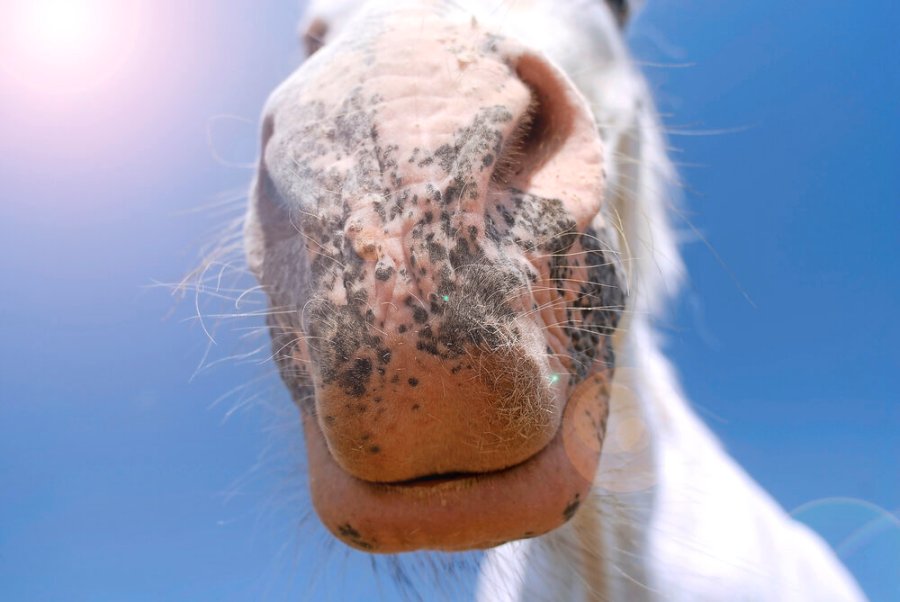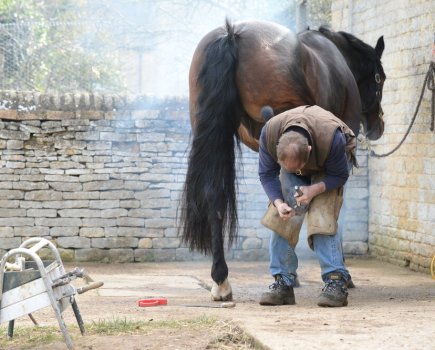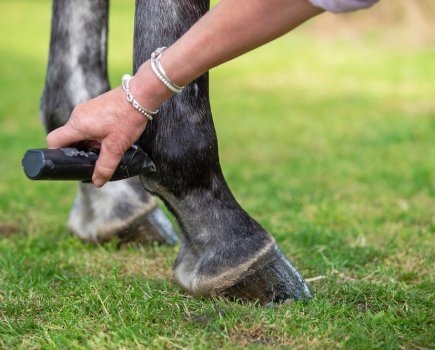Photosensitisation occurs in horses when photodynamic agents are deposited in the skin, after which they are exposed to and absorb ‘normal’ amounts of UV light.
As with humans, horses have varying tolerances to UV rays, meaning that some can cope with sunshine better than others, so with warmer weather comes an increased risk of sunburn and photosensitisation.
Of course, being outside in the sunshine has plenty of benefits and this is especially true of our horses, who are much better suited to being out in a field rather than standing in a stable. Sunshine lifts our spirits and allows us to soak up vital vitamin D, but, as the old adage goes, ‘everything in moderation’.
Photosensitisation in horses
Three forms of photosensitisation are recognised and horses suffer from types 1 and 3:
Photosensitisation type 1
Type 1 occurs after the horse has eaten preformed photodynamic agents (found in St John’s wort, buckwheat, perennial ryegrass and clover, to name but a few).
Photosensitisation type 3
Type 3 photosensitisation in horses occurs in advanced liver disease when the photodynamic agent phylloerythrin, which is normally detoxified by the liver, enters the bloodstream and accumulates in the skin.
The subsequent inflammatory reaction after the photodynamic gent has been exposed to UV light is characterised by reddened skin that may be painful and itchy.
The affected skin may also become ulcerated and crusty. The degree of damage is out of all proportion to the level of UV exposure. \
Similar to sunburn, lesions generally occur on the light-coloured skin of the horse’s muzzle and the back of the pasterns.
Horses with type 3 also show clinical signs consistent with advanced liver disease/ failure, including abnormal mental activity and other neurological signs, reduced appetite, weight loss and/ or jaundice.
Blood tests will help with the further investigation of liver disease, while a liver biopsy will sometimes be undertaken.
Sunburn in horses
Simple sunburn occurs when the horse’s skin becomes red and scaly following excessive exposure to UV light.
As in humans, the severity of the damage to horses depends on the strength of the radiation and the individual’s skin sensitivity.
Light-coloured skin is particularly prone due to a lack of melanin pigment, which absorbs UV light and scatters the radiation.
Hairless skin will also be more severely affected. The muzzle is the area most commonly affected by sunburn in horses.
Treating photosensitisation in horses
Mild cases of sunburn and sensitivity generally resolve themselves provided further exposure to UV light is prevented and the skin is given a chance to heal.
More severely affected horses will require the attention of a vet, as well as the application of topical medications (usually steroid-based creams).
Treatment for type 1 photosensitisation is based on eliminating exposure to photodynamic agents in the first place, in addition to the treatment and preventative measures you can employ for sunburn.
Treatment for type 3 involves further investigation and treatment of the underlying liver disease/ failure, but unfortunately the prognosis is poor.
Preventing photosensitisation
Excessive exposure to sunlight can be avoided by stabling during intense periods. Use of a water-repellent sunblock and a full-face shade mask should also be considered, particularly those that cover the horse’s sensitive muzzle area.
Fields should also be checked regularly for signs of poisonous plants that can trigger photosensitisation and removed immediately so that the horse cannot eat them.
Main image: copyright Shutterstock
Related content
- Can you identify these poisonous plants?
- How ragwort causes photosensitisation
- Is your horse getting enough vitamin D?
- Horses found with horrific burns after being left to fly graze contaminated land
- Ultimate guide to horse health insurance and vet fees cover
- Useful products for your equine first aid kit








